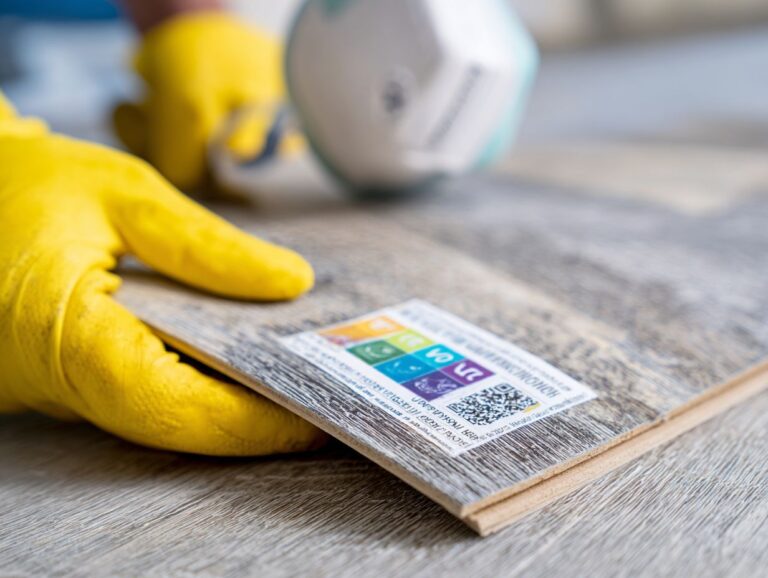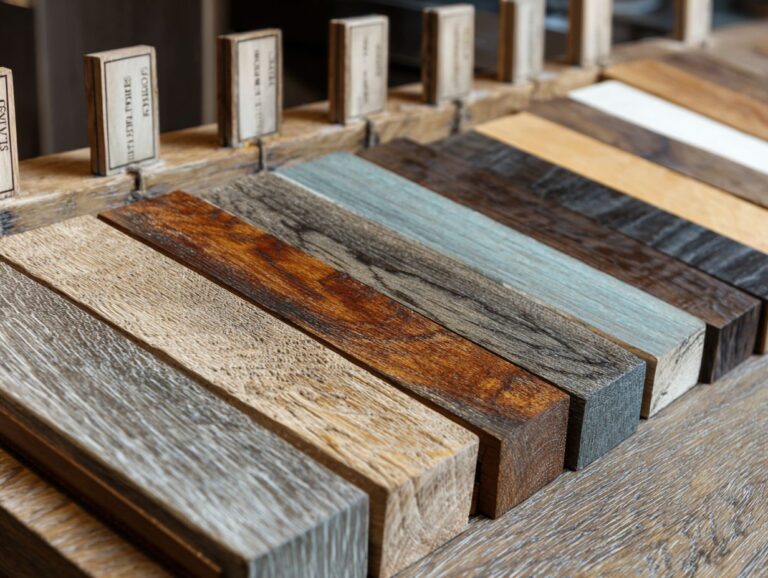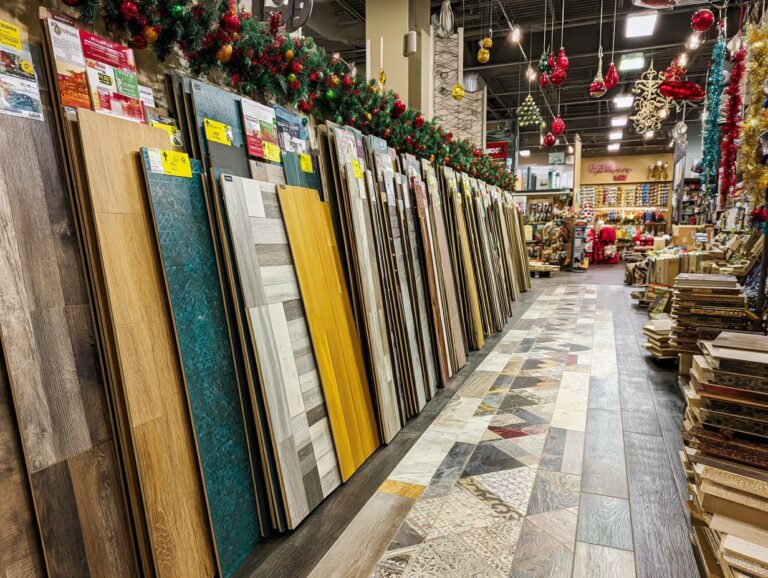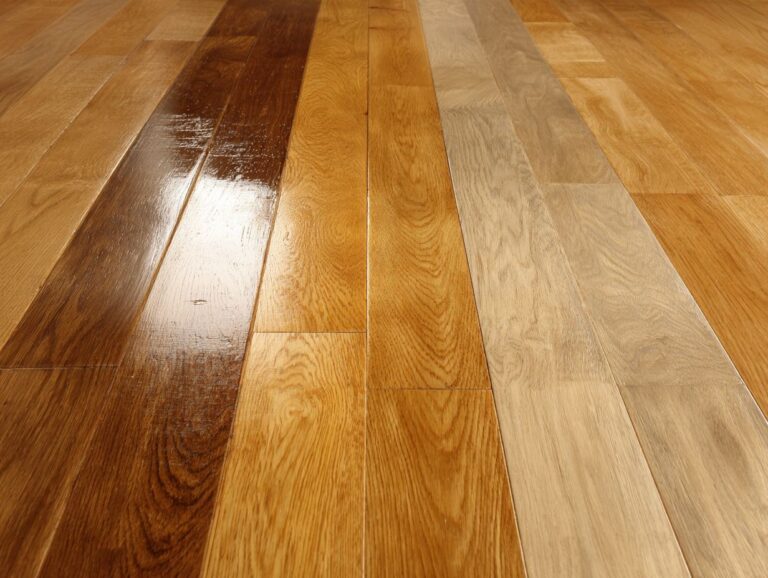Furniture Dents in Flooring – Removal Techniques
Contents
- Introduction to Furniture Dents in Flooring
- Flooring Damage Statistics and Related Costs
- Identifying Furniture Dents
- Prevention of Furniture Dents
- DIY Removal Techniques
- Professional Removal Services
- Restoration Techniques for Damaged Flooring
- Long-Term Care for Flooring
- Frequently Asked Questions
- What are some common causes of furniture dents in flooring?
- Are there any preventative measures to avoid furniture dents in flooring?
- Can furniture dents be removed from all types of flooring?
- What are some effective removal techniques for furniture dents in flooring?
- Can professional help be sought for removing furniture dents in flooring?
- What are some long-term solutions for preventing furniture dents in flooring?
Introduction to Furniture Dents in Flooring
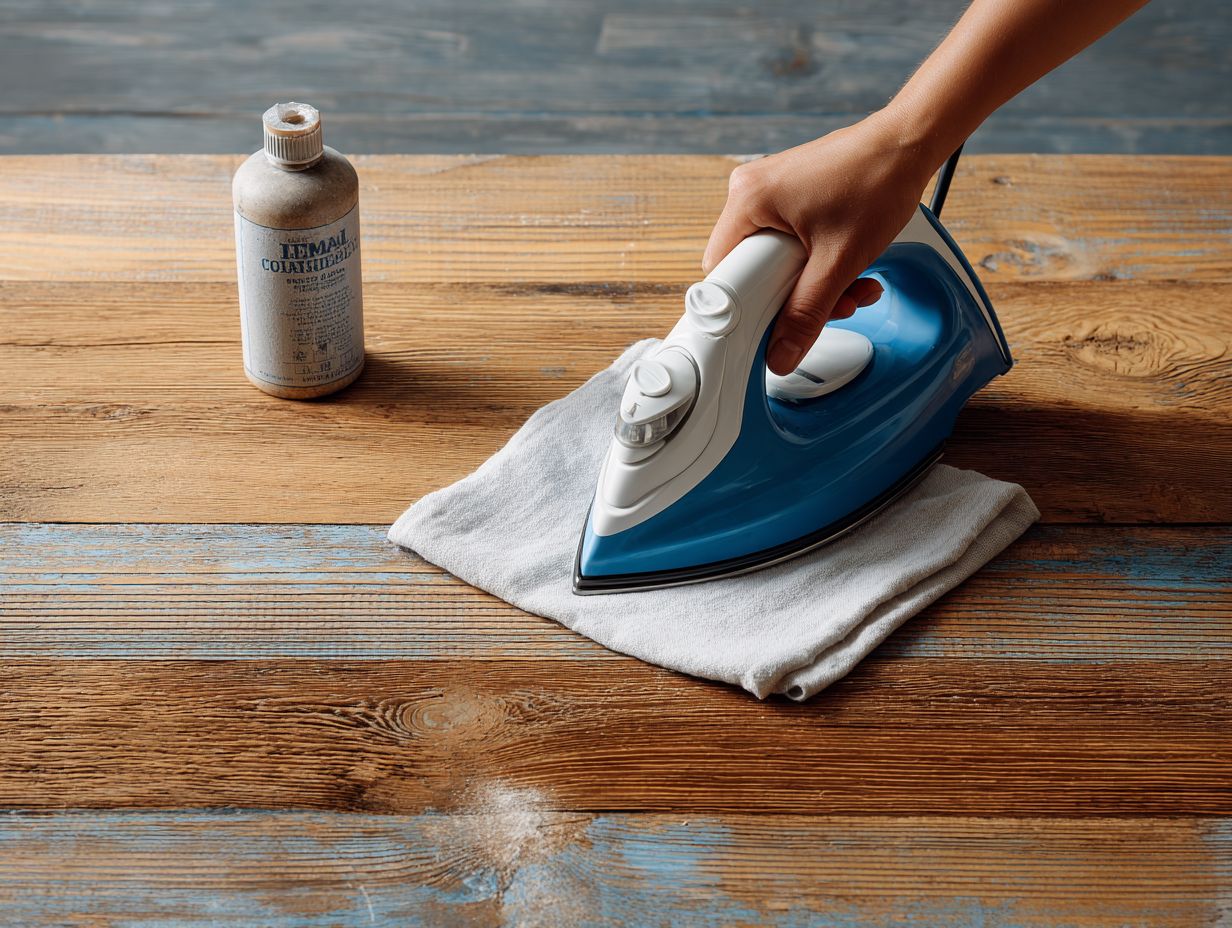
Key Takeaways:
Understanding the Problem
Furniture dents occur due to the weight of items pressing down on flooring materials, leading to indentations that can affect both look and functionality.
For example, heavy sofas can create noticeable dents on soft flooring like carpet or vinyl, while dining tables might permanently mark hardwood or laminate surfaces.
To prevent this, consider using furniture pads or coasters under the legs of your furniture.
- High-density felt pads are effective on hardwood,
- while rubber pads work well on carpeted areas.
Regularly rearranging your furniture can help distribute weight evenly, minimizing long-term damage. Changing a few small things can greatly increase how long your flooring lasts.
Flooring Damage Statistics and Related Costs
Flooring Damage Statistics and Related Costs
Annual Costs of Flooring Problems: Repair Cost Range per Incident
Common Types of Flooring Damage: Types of Damage Experienced by Homeowners
The Flooring Damage Statistics and Related Costs give a detailed summary of the common types of damage found in flooring and the related costs This data is important for homeowners and businesses looking to manage costs and protect their flooring investments.
Annual Costs of Flooring Problems highlight a wide range of repair costs, with incidents costing between $200 and $20,000. The minimum cost reflects minor repairs, such as patching or stain removal. In contrast, the maximum cost can include extensive damage requiring complete replacement or significant restoration efforts. This difference highlights how regular maintenance can stop small problems from turning into expensive fixes.
- Common Types of Flooring Damage: Data on homeowner experiences reveals that 60% face staining issues, suggesting that spills and moisture are prevalent problems. Stains can come from different things like food, drinks, and pet accidents, so it’s important to clean them quickly to avoid lasting damage.
- Buckling or Ripples in Laminate, Vinyl, and Hardwood: At 42%, this type of damage is often due to moisture exposure or improper installation. Temperature fluctuations and humidity can cause materials to expand and contract, leading to visible distortions.
- Cracks in Wood and Tile: Affecting 45% of homeowners, cracks can result from impact damage, poor installation, or subfloor issues. Regular inspections and addressing minor cracks early can prevent further deterioration.
- Ripped or Snagged Flooring: Also affecting 42% Damage often happens to carpets and soft materials because of walking, moving furniture, or sharp items. Timely repairs or replacement of affected areas can maintain aesthetic appeal and functionality.
The Flooring Damage Statistics Proactive upkeep and careful handling can reduce repair expenses, increase the lifespan, and maintain the worth of flooring investments. Knowing the common types of damage and their causes helps homeowners take steps to keep their flooring in good shape.
Common Types of Flooring Affected
Flooring materials such as hardwood, laminate, and even certain carpets are susceptible to dents, with each type responding differently to pressure.
Hardwood floors can suffer deep indentations from heavy furniture, with marks often visible even after the item is removed.
Laminate flooring is durable, but sharp items can still cause scratches. Meanwhile, carpets can compress under weight, leading to noticeable indents that may require fluffing or professional cleaning to restore their appearance.
Regularly rotating heavy furniture and using furniture pads can help mitigate these issues across all types.
Identifying Furniture Dents
Finding dents in furniture requires looking at the surface and checking how deep the dents are to choose the best way to fix them.
Visual Inspection Techniques
A thorough visual inspection can reveal the extent of furniture dents, often requiring only good lighting and a magnifying glass to assess details.
Start by ensuring the area is well-lit, ideally using a flashlight to pinpoint any indentations. Look at the piece from different sides; sometimes damage is clearer from a specific viewpoint.
Document your findings with photos-label each shot to categorize the damage as superficial or deep.
Consider using a gentle method like steaming to see if the dent can be lifted. Following these steps will help you figure out what repairs are needed and if you need to hire a professional.
Assessing Depth and Damage

Assessing the depth of a dent helps determine whether it can be repaired with simple methods or needs professional intervention.
To measure how deep the dent is, use your fingernail to press into it. This allows you to feel the contour against your nail.
Compare the dent’s depth to common benchmarks: about 1mm suggests a surface issue, while 5mm or deeper may indicate structural damage. Observe if the paint finish is compromised, as this will guide your repair method.
For small dents, you might try fixing them yourself with a hot water method or a suction cup tool. For serious damage, it would be best to visit a professional for repair.
Prevention of Furniture Dents
Choosing the right furniture and using floor protectors can help avoid dents, saving you both time and money over time.
Choosing the Right Furniture Feet
Selecting appropriate furniture feet, such as wider pads or rubber options, can effectively distribute weight and minimize dent formation.
For instance, felt pads, which usually cost under $10 for a pack, are ideal for lightweight furniture on soft floors, providing substantial cushioning.
Rubber caps are better suited for heavier items, especially on hardwood, as they absorb shock and prevent slips.
Glides allow furniture like chairs and tables to be moved easily. They are often made from materials like plastic and metal.
Assess the specific needs of your furniture and flooring type to choose the right feet for effective protection.
Using Area Rugs and Mats
Area rugs and mats act as barriers between furniture and flooring, absorbing weight and reducing the risk of dents significantly.
To select the right rugs, consider your furniture type and room usage.
-
For heavy sofas, opt for thick wool rugs, which cost between $150 and $500 depending on size.
-
For dining areas, non-slip mats are ideal to prevent sliding; these typically range from $50 to $200.
-
If you have pets or children, look for stain-resistant materials that can withstand wear and tear.
-
Check the size of your area to make sure the rug fits well. Leave at least 18 inches of rug around the seating for a balanced appearance.
Regular Maintenance Practices
Regular maintenance, including moving furniture periodically and cleaning, can prevent the buildup of pressure points leading to dents.
To effectively maintain your floors, follow a simple schedule:
- First, rearrange furniture twice a year to keep wear even.
- Next, clean the floor using a vacuum designed for hard surfaces, costing around $100, followed by a specialized cleaner like Bona Hardwood Floor Cleaner priced at $15.
- Look for dents and scratches regularly, every three months, to repair any damage promptly.
This proactive approach can significantly extend the life of your flooring while keeping it looking pristine.
DIY Removal Techniques
You can make your floors look better yourself without paying for expensive help by using things you already have at home. Curious about how to handle issues like laminate floor peaking and buckling? Our guide provides easy solutions you can implement with common household items.
Using Steam to Remove Dents
The steam method uses moisture to lift and reshape fibers in carpets or wood flooring, quickly removing dents.
To apply this method effectively, gather your materials: a steam cleaner, a towel, and safety gloves.
Begin by filling the steam cleaner with water and allowing it to heat up. Then, gently press the steam nozzle against the dent for about 30 seconds, ensuring you don’t over-saturate the area.
After steaming, use the towel to blot away any moisture, being cautious not to rub the surface to avoid damaging the finish. This technique is particularly effective on natural fibers and hardwood but should be used with care on delicate wood finishes to prevent warping.
Water and Cloth Method
Using water and a cloth is a simple yet effective method for removing dents by hydrating the material and allowing it to expand.
- To begin, apply a small amount of water to the dented area, ensuring it is fully saturated.
- Next, cover the damp spot with a clean cloth, then gently place a warm iron set on low heat over the cloth for about 10 seconds. This method helps the material regain its shape.
- If the dent remains, try again, being careful not to apply too much heat, as it can harm the surface.
- Test a small hidden spot first to check it won’t have a bad reaction.
Ice Technique for Wood Floors
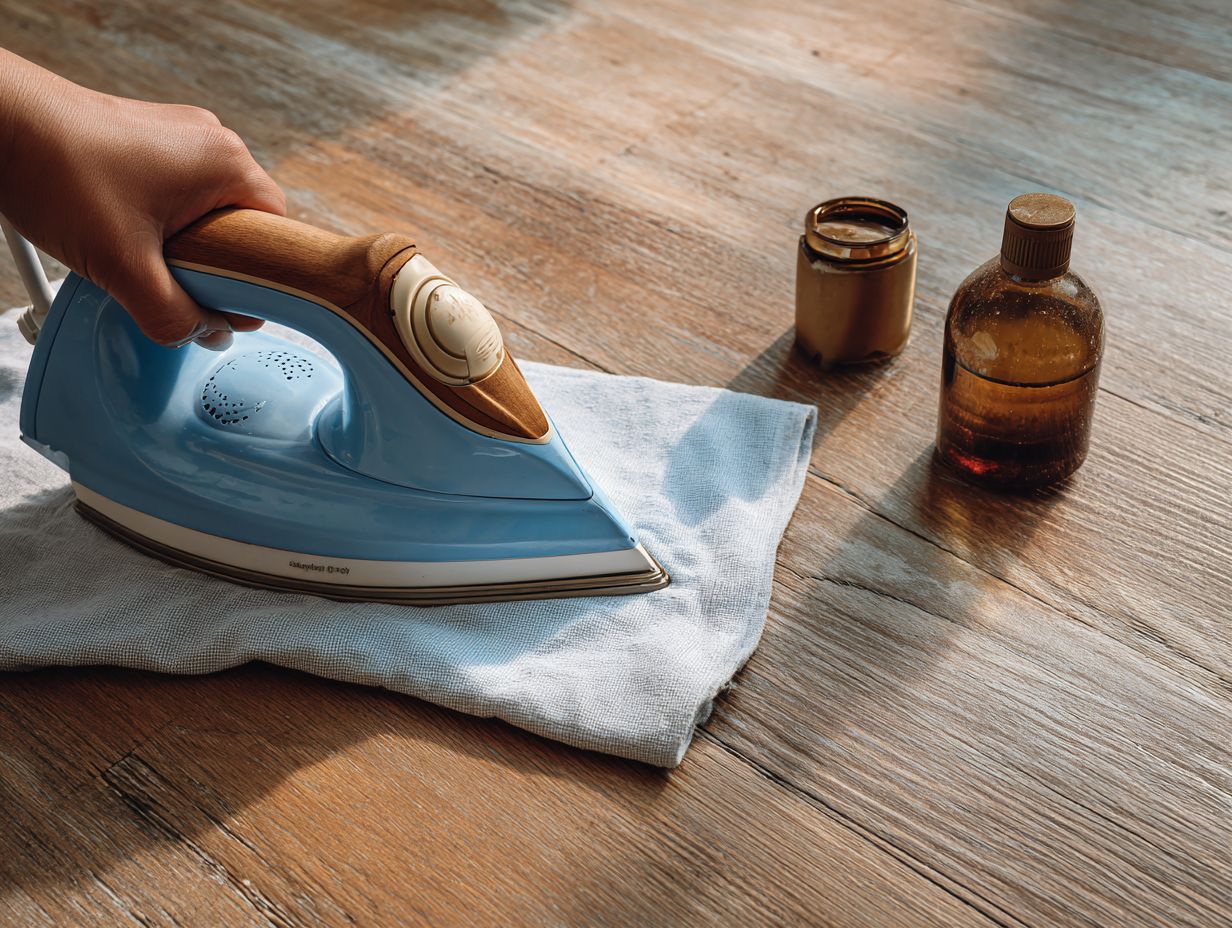
The ice technique effectively works on wood floors by allowing the moisture from melting ice to swell the fibers back into place.
For best results, follow these steps:
- Place an ice cube in a cloth, ensuring it covers the dent completely.
- Leave it over the dent for approximately 15 minutes, allowing the moisture to penetrate.
- Once done, wipe the area dry and gently comb the fibers to restore texture.
While this method is particularly effective on shallow dents, deeper ones may require repeated applications or additional techniques, such as using a wood restorer to blend the affected area.
Professional Removal Services
If do-it-yourself methods don’t work or the damage is significant, hiring experts to remove it can be a good choice for fixing the floor’s look.
When to Seek Professional Help
Consider professional help if dents are deep, extensive, or if flooring has been compromised beyond simple repair techniques.
Key criteria for professional intervention include deep dents exceeding 5mm, significant damage to the finish, and multiple affected areas. If a part of your hardwood floor has many dents and scratches, hiring an expert can guarantee an even repair.
The usual price for these services is between $100 and $300, based on how bad the damage is and where it needs fixing. Ask for quotes from different local professionals to evaluate their services and costs before making a choice.
What to Expect from a Service
When hiring a professional service, expect a thorough assessment, effective repair techniques, and a warranty on work performed.
Most services begin with an initial consultation to identify issues and recommend solutions, typically lasting about 30-60 minutes.
Following this, they might use methods like sanding for minor surface damage or refinishing to restore appearance.
After repairs are completed, a follow-up inspection is standard, ensuring satisfaction and longevity of the work.
Most jobs are completed within 1-2 days, reducing any disturbance to your area, and a solid warranty usually comes with the service, offering you extra assurance.
Restoration Techniques for Damaged Flooring
Different flooring types require specific restoration methods, which are important to keep their worth and look.
Refinishing Wood Floors
Refinishing wood floors can rejuvenate their surface, improving appearance and repairing minor dents and scratches.
- Begin by sanding the floor using an orbital sander, which you can rent for around $150. This process removes the old finish and smooths out imperfections.
- After sanding, apply a stain of your choice, typically priced between $20 to $50. Seal the wood to protect it, utilizing a quality varnish.
- Expect the entire project to take 1-2 days, allowing for drying time between each step. This method improves the look of the floor and makes it last longer.
Replacing Damaged Tiles or Planks
Replacing damaged tiles or planks is necessary when they are too badly worn out to be fixed by other means.
The process begins by removing the damaged tile or plank. Use a chisel and hammer to carefully lift it out without damaging adjacent pieces.
The next step is to prepare the subfloor by ensuring it is clean and free of debris so it will stick properly. For the installation, a tile cutter ($50) is essential for getting exact measurements.
Apply adhesive ($10) after laying the new tile or plank, which usually costs between $5-$15 each. Let it sit according to the glue instructions to make a strong fix.
Long-Term Care for Flooring
Maintaining floors involves regular maintenance to keep them in good condition and durable, avoiding issues like dents. Related insight: Understanding flooring expansion gaps can also contribute to prolonging the life of your floors.
Best Practices for Furniture Placement
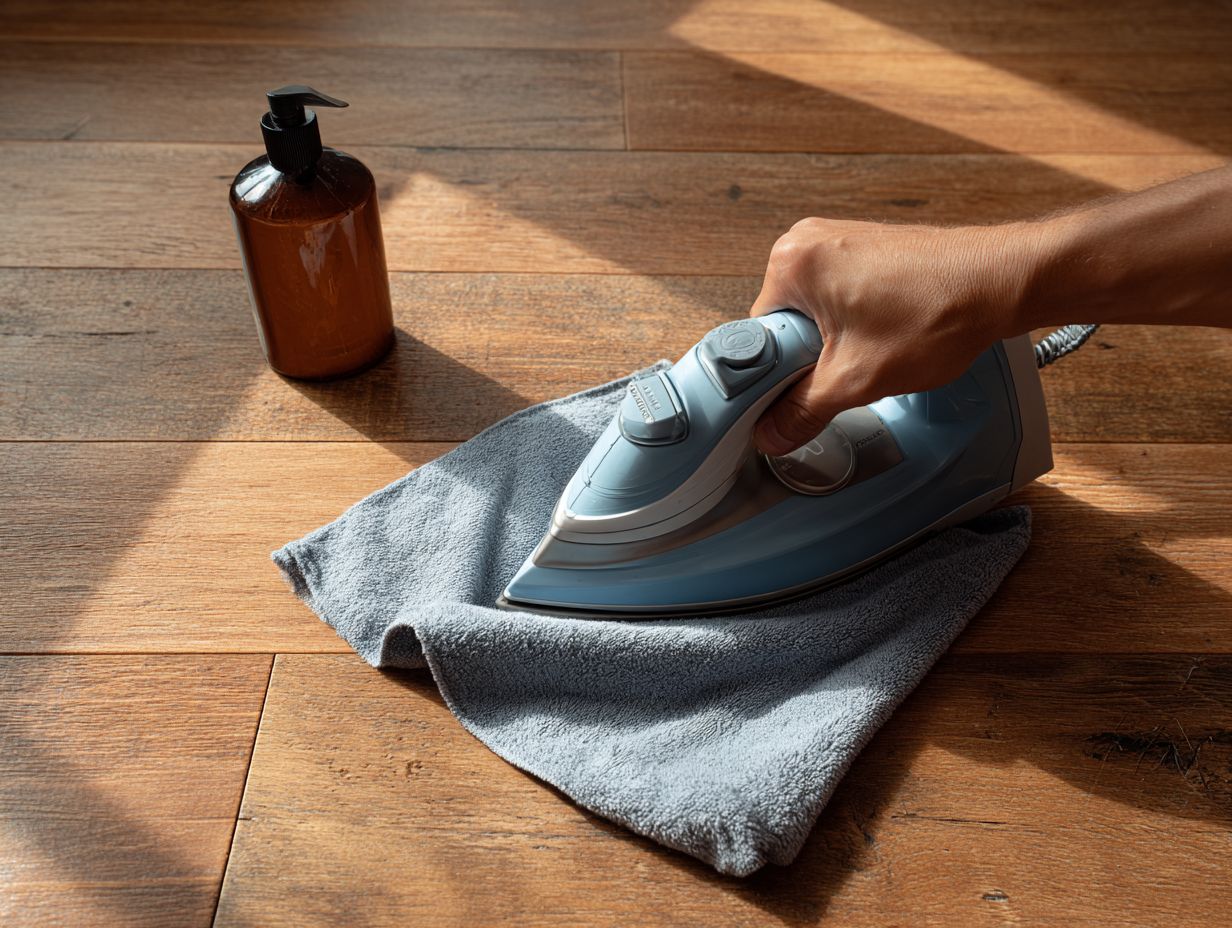
Proper furniture placement can significantly mitigate the risk of furniture dents, extending the life of your flooring.
To protect your floors effectively, consider these practical tips:
- Space out heavy items like bookcases or sideboards to distribute weight evenly.
- Use coasters or felt pads beneath smaller furniture to create a cushion.
- Keep wheels on movable items such as chairs and tables to prevent dragging.
For example, a layout where a heavy sofa is placed away from high-traffic areas, paired with felt pads on its legs, minimizes dent risks while maintaining an inviting atmosphere. By following these guidelines, you can enjoy both beautiful furniture and lasting flooring.
Routine Inspections and Touch-Ups
Routine inspections and touch-ups can catch potential issues before they escalate into major problems, ensuring your flooring remains in excellent condition.
To maintain your flooring, implement a seasonal checklist:
- Start by inspecting for visible dents and scratches; this helps in early identification of wear.
- Use repair kits costing between $10 and $30 to fix small damage fast. For example, a wood floor repair kit can seamlessly fix small dents and scratches, enhancing the floor’s appearance.
- Document any changes in a maintenance log to track improvements and when additional care is needed.
By maintaining your flooring early, you protect it and help it last much longer.
Summary of Effective Techniques
To maintain your flooring, consider a combination of prevention strategies, DIY repair methods, and professional services when needed.
- Start with preventive measures, such as placing mats at entryways to reduce dirt accumulation.
- Regular cleaning is important; choose products that are suitable for your type of floor.
- For DIY repairs, minor scratches on hardwood can be concealed with a wood filler or a simple touch-up kit.
- If you face significant issues, like warping or extensive damage, hiring a professional for assessment can save costs in the long run.
- Set up regular checks to find issues early and make sure your flooring stays in good condition for many years.
Frequently Asked Questions
What are some common causes of furniture dents in flooring?
Furniture dents in flooring can be caused by heavy furniture being dragged or moved across the floor, as well as prolonged pressure from the weight of furniture legs or feet.
Are there any preventative measures to avoid furniture dents in flooring?
Yes, using furniture pads or felt under the legs of furniture can help distribute weight and prevent dents from forming in flooring. Regularly rearranging furniture can also prevent dents from occurring in the same spot.
Can furniture dents be removed from all types of flooring?
While some flooring materials are more susceptible to furniture dents, such as hardwood and vinyl, most can be removed with the proper techniques and tools.
What are some effective removal techniques for furniture dents in flooring?
One technique is to use a damp cloth and a hot iron to steam the area, which can help the fibers of the flooring to expand and reduce the appearance of the dent. Another method is to use a hair dryer to soften the flooring and then use a spoon to gently push the dent out.
Can professional help be sought for removing furniture dents in flooring?
Yes, there are professional services that specialize in removing furniture dents in flooring. They have specialized tools and techniques to effectively remove dents without causing further damage to the flooring.
What are some long-term solutions for preventing furniture dents in flooring?
In addition to using furniture pads and regularly rearranging furniture, using area rugs or carpet under furniture can help distribute weight and prevent dents in the flooring. It’s also important to properly maintain and care for flooring materials to keep them in good condition and less susceptible to dents.
